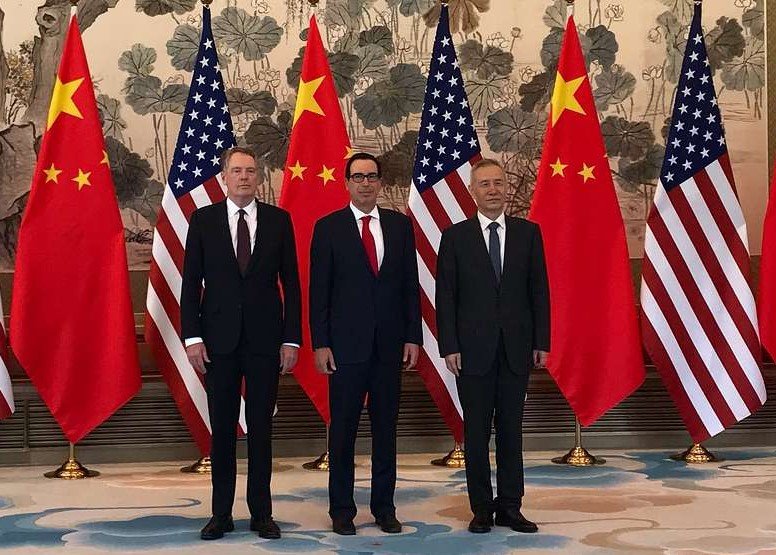Tensions flare again as China hits back at the US for allegedly violating a recent trade agreement, putting a damper on hopes for a quick high-level chat between President Xi Jinping and Donald Trump. The dispute centers on fresh US restrictions, sparking fears of renewed trade friction.
Trade Truce Under Strain After New US Restrictions
China’s Ministry of Commerce didn’t hold back Monday. It publicly slammed the US for what it called a breach of the Geneva trade consensus agreed just last month. According to Beijing, the US has gone rogue by rolling out new discriminatory measures that directly undermine the fragile peace.
Specifically, China points fingers at recent US controls on AI chip exports. But that’s not all — the US also tightened rules on chip design software sales to Chinese firms. Add to that the surprise revocation of Chinese student visas, and Beijing’s patience appears to be running thin.
For China, these moves are more than just economic restrictions — they’re a direct challenge to its national interests. The ministry vowed a firm response, signaling that retaliation could come swiftly if the US doesn’t back off. The language was clear: Beijing won’t stand idly by.
Impact on High-Level Talks and Diplomatic Relations
All this comes at a delicate moment. Donald Trump had expressed optimism last Friday about having a phone call with Xi Jinping soon. White House economic adviser Kevin Hassett even said a call was “expected to happen this week.” Now, those plans look shaky.
China’s accusations throw a wrench into what many hoped would be a thaw in the rocky trade relationship. Instead of moving forward, both sides appear to be digging in, ready to defend their positions with even more vigor. The prospect of a quick diplomatic breakthrough feels increasingly distant.

Still, it’s not all doom and gloom. Both countries recognize the cost of escalating tensions, especially amid ongoing global economic uncertainties. The US and China are major players with intertwined supply chains and investments. The stakes are high — not just for these two giants but for the global economy as well.
What Exactly Did the US Do?
Let’s break down the specific US actions Beijing objects to:
-
AI chip export controls: New guidelines severely limit the sale and shipment of advanced AI chips to China, restricting access to crucial technology for AI development.
-
Chip design software restrictions: US companies face tighter rules when selling sophisticated software tools used for chip design to Chinese customers, limiting innovation flow.
-
Chinese student visa revocations: Hundreds of Chinese students have reportedly seen their US visas revoked or delayed, a move China views as politically motivated and harmful to academic exchange.
These measures mark a sharp shift from the trade détente efforts made during the Geneva talks. From China’s perspective, the US is reneging on promises and imposing unilateral restrictions that undermine cooperation.
Balancing Act: Economic Interests vs. Political Pressure
The US faces a tricky balancing act. On one hand, there’s intense political pressure in Washington to curb China’s technological rise and address national security concerns. On the other, the US economy benefits significantly from trade and collaboration with China.
Chinese exports to the US reached $688 billion in 2024, according to the latest trade figures, showing just how deeply connected the two economies are. Yet, in the political arena, tough talk on China remains popular across the board.
The dispute over AI chip exports is especially symbolic. Chips power everything from smartphones to self-driving cars to military systems. Control over this tech is viewed as a strategic front in a broader race for global dominance.
Some analysts suggest that the recent US moves might be intended to put pressure on Beijing ahead of the planned talks. But the risk is clear: pushing too hard could backfire, hardening China’s stance and risking a trade war escalation.
What Could Happen Next?
For now, both sides are stuck in a tense standoff. China’s firm response signals that it won’t just sit quietly if the US keeps applying new restrictions. Beijing could retaliate with tariffs, export bans, or other trade barriers, which would only deepen the divide.
While both sides talk tough, markets and global businesses are watching nervously. Any prolonged disruption could ripple far beyond the two countries.
The Human Side of the Trade Dispute
It’s easy to forget the human angle here. The visa revocations hit students caught in the crossfire, disrupting their education and future plans. Meanwhile, companies from Silicon Valley to Shenzhen are facing uncertainty — unsure how these shifting rules will affect their investments and jobs.
Many ordinary people, from factory workers to college students, feel the consequences of these high-stakes power plays. As politicians spar over trade deals and technology controls, lives and livelihoods hang in the balance.
So, what now? Will the leaders step back from the brink? Or is this just the start of a new, more hostile chapter in US-China relations? Only time will tell, but one thing’s for sure — this story isn’t over yet.
